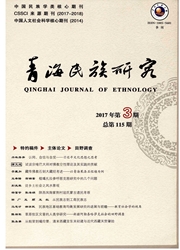

 中文摘要:
中文摘要:
本文对在四川石渠、青海玉树和西藏昌都等地区发现的大日如来造像按照组合形式的不同分为单尊、三尊组合和九尊组合进行了归纳整理并进行了分析。本文认为,大日如来单尊造像主要出现在四川石渠地区,年代相对较早;大日如来和观音菩萨、金刚手三尊组合的造像至迟在赤松德赞时期已经出现,并且在各个地区都有流行;大日如来和八大菩萨的组合主要流行于昌都和玉树地区,年代大致为八世纪晚期至九世纪上半叶。八大菩萨有多种配置方式,系汉地对藏传佛教艺术进行变通融合的结果。
 英文摘要:
英文摘要:
The paper classified the images of Vairocana found in Sershul of Sichuan, Yushul of Qinghai and Chamdo of Tibet into single, three-combination and nine-combination and gave an analysis of those images. The author thinks that the single image or statue of Vairocana appeared mainly in Sershul of Sichuan and its date was relatively early. The three-combination of Vairocana, Avalokiteshvara and Vajrapani appeared no later than Trisong detsen period and was popular among all those areas mentioned above. The nine-combination of Vairocana and eight Bodhisattvas was mainly found in Chamdo and Yushul area roughly during the late 8th century and the first half of the 9th century. The eight Bodhisattvas were placed in various composition patterns as the result of cultural exchange of Sino-Tibetan Buddhist art.
 同期刊论文项目
同期刊论文项目
 同项目期刊论文
同项目期刊论文
 期刊信息
期刊信息
